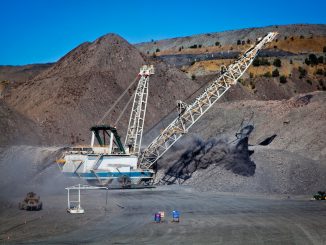
When you started your construction company you likely thought about the types of employees you would need to hire. What you may have spent less time considering was how you were going to manage those employees. Large construction companies can hire entire human resource departments, a legal department, and an army of project managers. But a small to medium-sized construction company typically has a smaller budget to work with. In this article, we’ll discuss how to manage employees in your construction business.
Know the Laws
As an employer there are federal and state laws related to hiring and firing employees. There are rules and regulations around the workplace environment. In construction, understandably, there is a great focus on safety. There will be Occupational Safety and Health Administration (OSHA) guidelines that need to be implemented and followed on the job site. Finally, there are laws related to compensation, health insurance, payroll, etc.
Hire Right
Take the time to hire the right person for the job. Someone may know all the buzzwords and dress real nice for the interview, but that doesn’t mean you should hire them on the spot. At the same time, don’t reject a prospective employee because they have less experience or education than you expected. Or they don’t “look the part.” Ultimately, you want someone who can get the job done and get along with others on your team.
Due Diligence
Take the time to perform background checks. Call previous employers and personal references. Some employers ask for personal references, but never contact them. You can learn more from a personal reference than a previous employer – who likely will only confirm the candidate’s title and employment dates. You would be amazed what folks will say when given an open-ended question to answer.
Set Expectations
You should start setting your expectations in the job interview. If you expect an employee to be available to work nights and weekends – tell them this upfront. Provide a written description of roles and responsibilities. All employees should be clear on any “zero-tolerance” policies – such as arriving on the job site under the influence of drugs and alcohol. Once they are on the job be clear about tasks and deadlines.
Carrots and Sticks
You can use rewards to motivate people. This can take many forms. Cash is king, but sometimes just praising someone for exceptional work is enough. Some employees are keen to advance within the company. Provide training and mentorship to these employees where possible. Be careful with sticks – praise in public; dress down in private. If an employee is consistently performing poorly on the job, it is your responsibility to help them improve – or fire them. Have a process for dealing with problem employees. Be clear with them on what the issues are and how they can improve. Set goals in writing and meet with them regularly to discuss their progress. If you ultimately have to fire them, you will have a written record should the matter ever go to court.

Unforgivable
There is some behavior that is simply unacceptable. Drug and alcohol use on the job, physically or verbally assaulting coworkers, and stealing should be cause for immediate dismissal. These are expectations that should be set in the interview and at employee orientation.
Sharing is Caring
Check in with your employees regularly – individually and as a group. You should know what they are up to – and they should know you know. It’s a balancing act – you want to give your workers as much autonomy as possible within a framework. If you give them a task, unless it must be done in a particular way, let them do it their way. You should minimally have annual performance reviews. Use the opportunity to tell each employee what they are doing well and what needs improvement. Help them set goals. Then follow their progress.
Listen Up
Your workers are your eyes and ears on the job site. Make sure they feel comfortable telling you the good, the bad, and the ugly. Ask them what they think should be done to solve a problem. If it’s a good idea and it works – give them the credit. Most of the time an employee just wants to know that you value their opinion – even if you don’t implement their solution.
Technology
Use technology to help you manage your employees. There are many options available for construction project management. Involve your team in the selection process to get their buy-in and to ensure the product you select will meet their needs. Provide the training they require to use the new system.
Flex Work
Hiring temporary workers in the construction industry is standard practice. In many cases it just isn’t feasible to keep a bunch of tradespeople on the payroll. But there are many other jobs where hiring a temporary worker makes sense. Smaller construction companies typically do not have the budget to hire a marketing department. But you can hire freelancers to perform marketing and other non-construction tasks. The best part is if they don’t work out, you just hire another freelancer.
Lead by Example
An important part of employee management is leading by example. Expect your workers to show up on time? Then you should show up on time – early, if possible. If your workers must wear personal protective equipment (PPE) on the jobsite, make sure you don those hardhats, work boots, and protective eye gear too.
View the complete article here.
What are the key legal considerations for managing employees in a construction business?
Legal considerations include federal and state employment laws, workplace safety regulations (OSHA guidelines), and aspects related to compensation, health insurance, and payroll.
How can construction business owners effectively motivate and manage their employees?
Employers can motivate employees through clear expectations, positive reinforcement, performance reviews, and addressing issues promptly, while leveraging technology for efficient management.












































